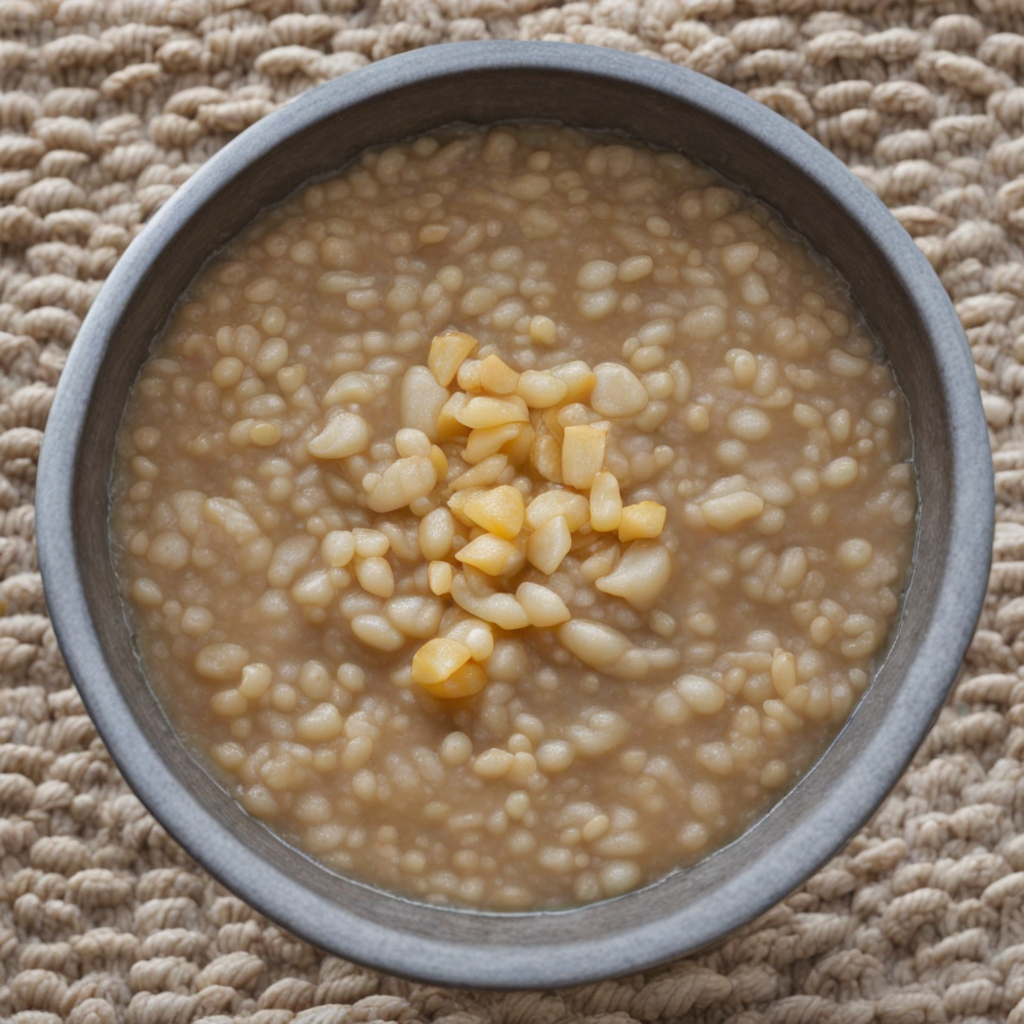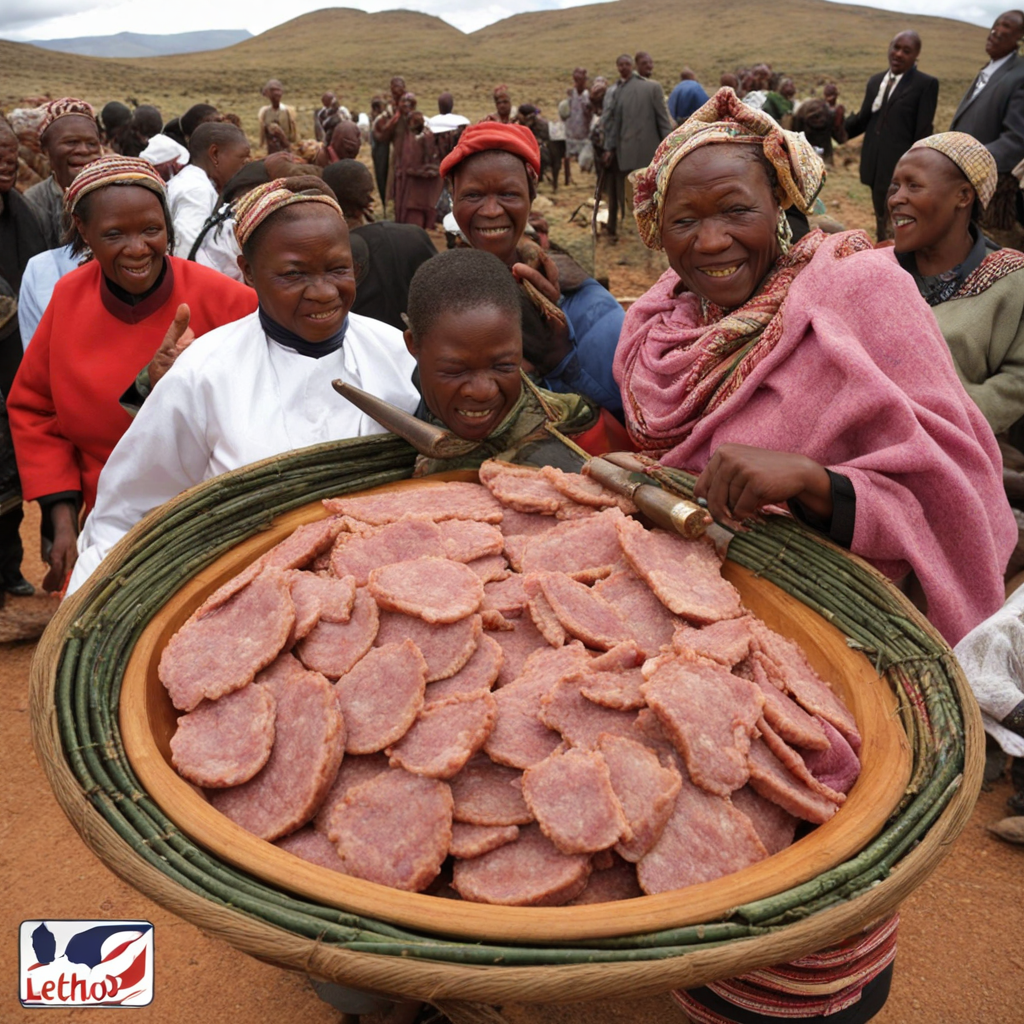Lesotho Cornbread
Lesotho Cornbread, commonly known as "papa," is a staple food in the mountainous kingdom of Lesotho, located in Southern Africa. This traditional dish has deep roots in Basotho culture, where corn, or maize, has been a dietary staple for centuries. The reliance on maize as a primary food source is linked to the region's agricultural practices, where maize is one of the few crops that thrive in the high-altitude, cooler climate. Cornbread reflects the resilience and adaptability of the Basotho people, who have historically faced challenges such as harsh weather and difficult terrain. The flavor profile of Lesotho Cornbread is mild and slightly sweet, with a dense, hearty texture that makes it a satisfying accompaniment to a variety of dishes. The simplicity of the cornbread allows it to absorb the flavors of accompanying sauces, stews, and meats, making it a versatile component of the Basotho diet. The aroma while baking is warm and inviting, often evoking a sense of home and community, as it is commonly prepared in family settings. Preparation of Lesotho Cornbread involves a straightforward process that showcases its rustic roots. The key ingredient is finely ground maize meal, which is mixed with water and a pinch of salt to create a thick batter. Traditionally, this mixture is poured into a cast-iron pot, or "molefe," which is then placed over an open flame or in a hot oven. The cooking method can vary; some families prefer to steam the batter in a
How It Became This Dish
Origin of Lesotho Cornbread Lesotho cornbread, locally known as 'papa' or 'phala,' has deep roots in the culinary traditions of the Basotho people, who inhabit the mountainous kingdom of Lesotho in Southern Africa. The introduction of maize (corn) to the region is attributed to European settlers in the late 19th century. Prior to maize cultivation, the Basotho relied on traditional grains such as sorghum and millet for their dietary needs. The adaptability of maize to the high-altitude environment of Lesotho allowed it to flourish, eventually becoming a staple food item in the Basotho diet. The traditional method of preparing cornbread involves grinding dried maize into a coarse flour, which is then mixed with water to form a thick porridge. This porridge is cooked in a cast-iron pot over an open fire, resulting in a dense, flavorful bread. The use of maize flour not only transformed the eating habits of the Basotho but also became a symbol of resilience and adaptation in the face of changing agricultural practices and colonial pressures. Cultural Significance Lesotho cornbread holds a place of great cultural significance within the Basotho community. It is often served as a staple accompaniment to various traditional dishes, including meat stews and vegetable relishes. More than just a food item, papa is emblematic of Basotho identity and heritage. It is a dish that brings families and communities together, often shared during communal gatherings, celebrations, and rituals. In Basotho culture, the preparation and consumption of cornbread is imbued with social meaning. The act of making papa can be an occasion for storytelling and bonding among women, who traditionally prepare the bread. It serves as a medium for passing down culinary knowledge from one generation to the next, ensuring that the cultural practices surrounding food remain alive. Development Over Time Over the years, the development of Lesotho cornbread has been influenced by various factors, including globalization and the introduction of modern cooking techniques. Although traditional methods remain prevalent, some urban households have begun to incorporate commercial maize meal products, which streamline the cooking process. This shift reflects broader changes in lifestyle and food preparation practices as urbanization increases and time constraints grow. Despite these changes, many Basotho people continue to honor the traditional ways of preparing papa, recognizing the importance of maintaining their culinary heritage. The preservation of traditional recipes and cooking styles is particularly evident during cultural festivals and national holidays, where the preparation of cornbread serves as a reminder of the Basotho's rich history and cultural identity. Culinary Variations While the classic version of Lesotho cornbread is widely recognized, regional variations exist that reflect local ingredients and preferences. In some areas, additional ingredients such as pumpkin, spinach, or even cheese are incorporated into the cornbread batter, adding unique flavors and nutritional value. These variations not only enhance the taste but also showcase the creativity and resourcefulness of the Basotho people in utilizing available resources. Furthermore, the practice of serving cornbread alongside traditional dishes has evolved. Today, it is not uncommon to find papa paired with modern culinary influences, including grilled meats and international sauces. This fusion of traditional and contemporary cuisine reflects the dynamic nature of food culture in Lesotho, where tradition meets innovation. Modern Recognition and Popularity In recent years, there has been a growing interest in Lesotho cornbread beyond the borders of the kingdom. Food enthusiasts and chefs around the world have started to recognize the unique qualities of this traditional bread, leading to its inclusion in international culinary festivals and events. This newfound appreciation highlights the importance of celebrating and sharing indigenous foods, promoting cultural diversity in the global food landscape. Additionally, as the Basotho diaspora expands, so too does the reach of their culinary traditions. Communities abroad often find comfort in preparing papa as a way to connect with their roots, creating a sense of belonging and nostalgia. This transnational connection emphasizes the role of food as a means of cultural preservation, allowing individuals to maintain ties to their heritage even when physically distant. Challenges and Future Outlook Despite its cultural significance and growing popularity, Lesotho cornbread faces challenges that could impact its future. The effects of climate change on agriculture, including maize production, pose a threat to traditional farming practices. As weather patterns become less predictable, the sustainability of maize cultivation is at risk, which could directly affect the availability of this staple food. Moreover, the encroachment of fast food culture and convenience foods poses a challenge to traditional culinary practices. As younger generations gravitate towards quicker meal options, there is a potential for the erosion of traditional foodways, including the preparation of cornbread. To counter this trend, efforts to promote local food systems and cultural education are essential in ensuring that Lesotho cornbread remains a cherished aspect of Basotho identity. Conclusion Lesotho cornbread is more than just a staple food; it is a symbol of resilience, heritage, and community among the Basotho people. Its evolution from a traditional grain to a beloved dish reflects the interplay of culture, history, and modernity. As the world continues to embrace diverse culinary traditions, the story of Lesotho cornbread serves as a reminder of the importance of preserving and celebrating indigenous foods, ensuring that they remain integral to the cultural fabric of the Basotho and beyond.
You may like
Discover local flavors from Lesotho







